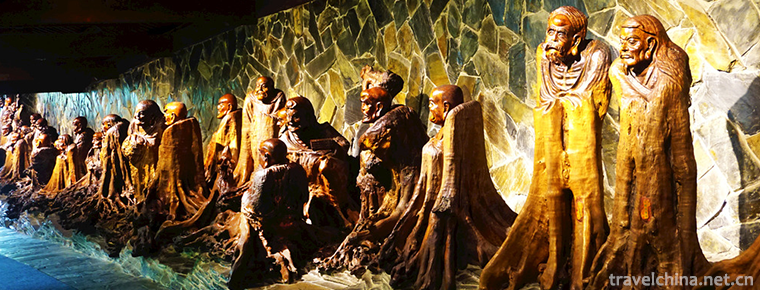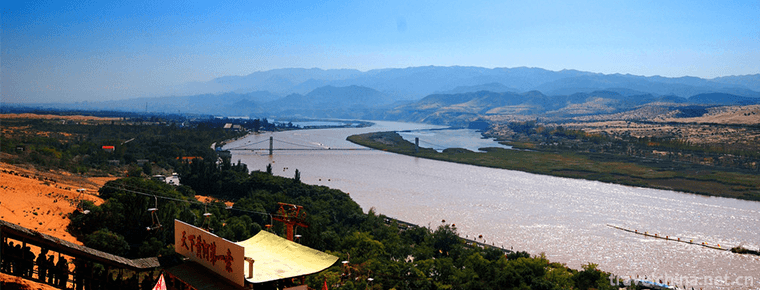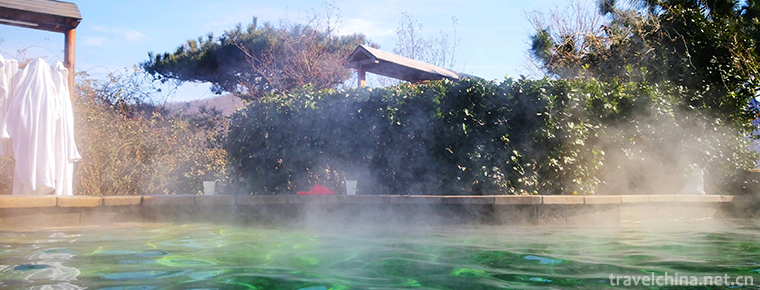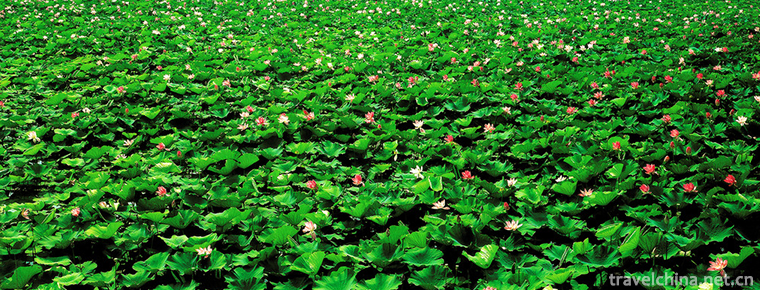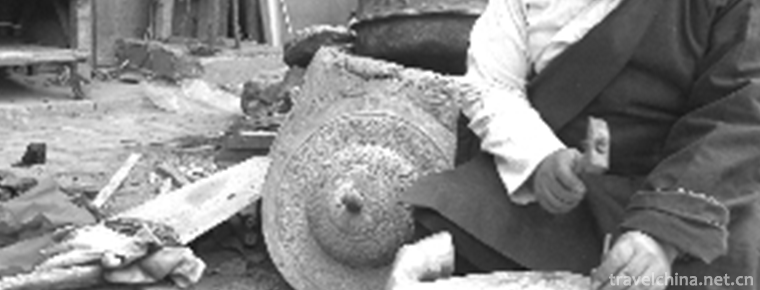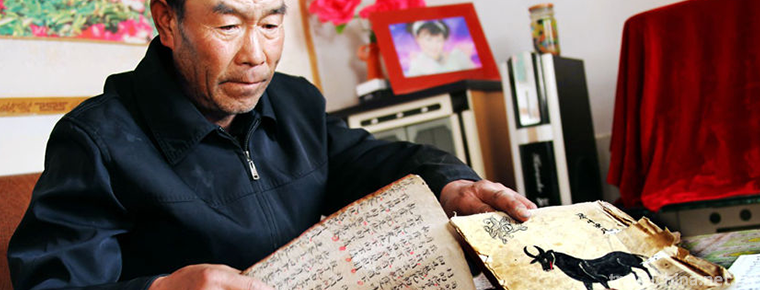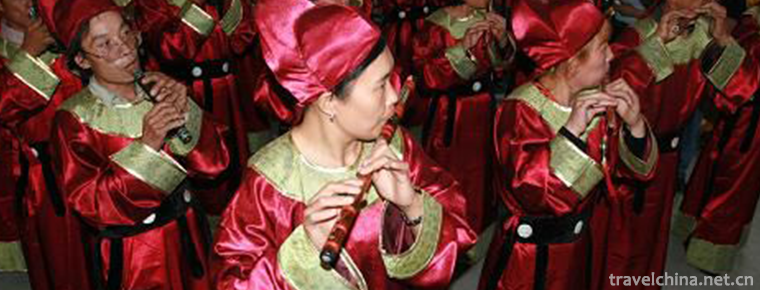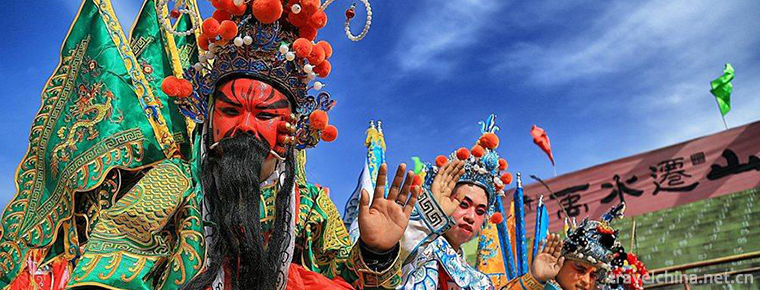Shaoyuan mythological group
Shaoyuan mythological group
Shaoyuan myth group is one of the ancient Chinese myths and legends. Refers to the general name of the creation myths and mythological prototypes circulated in Shaoyuan Town, Jiyuan City, Henan Province. Since ancient times, stories such as Nuwa have been circulating in Shaoyuan. In the north of Zhenzhou, there are Heilongshan, Aobeishan, Suoquanling, which is located at the four poles of the broken Aozuo foot, Suoquanling where the lime is locked up, and Yinhe Gorge where the stone is refined to fill the sky, as well as ancient place names, cultural relics and ancient relics. The rich content of Shao Yuan's myth of creation reflects the relationship between people and nature, people and society, people and people, and people themselves, as well as contradictions, conflicts and struggles. It is harmonious in the process of unity of opposites and accumulates the national humanistic spirit.
On June 7, 2008, the "Shaoyuan Myth Group" declared by Jiyuan City, Henan Province, was approved by the State Council and listed in the second batch of national intangible cultural heritage list.
historical origin
Shaoyuan Town, Jiyuan City, Henan Province, is located at the junction of Henan and Jin Dynasties in the northwest of Henan Province, north of the Taihang, Wangwu and Zhongtiao Mountains inhabited by primitive human ancestors; south of the Yellow River, the mother river of the Chinese nation, covering an area of 337 square kilometers, with 40,000 people, it spans 112 112 10', and 35 10'- 35 According to the research of human scientist, the area around 35 degrees north latitude is most suitable for human survival and development. The geographical location and environment of Shaoyuan area in the ancient Chinese people determine that it must be the origin of the creation myth. Peiligang cultural sites 7,000 years ago and Yangshao and Longshan cultural sites 5,000-4,000 years ago have been found in the territory. They have abundant human landscape resources and unique natural conditions. They are full of Qifeng and Junling mountains, rivers and rivers, green mountains and clear waters, and pleasant environment. They are places where the ancestors of China thrive and thrive. Shaoyuan has complex geological structure, unique geomorphology, rich content of Kaitian myths and legends, and clear outline of natural prototypes. Shaoyuan has a long history of history and culture. Shaoyuan is an ancient and magical place where the creation myth of China originated.
(Source of Shaoyuan Mythological Group Prototype Atlas: )
Shaoyuan is an ancient town with a history of more than 7000 years. Even if there are written records, it has a history of more than 3000 years. With the change of administrative divisions, there are many names in history, such as Zhao, Shao, Shao, Shao, Shao, Shao, Shao, Shao, Shao, Shao, Wangwu, Shao and so on. The story of Nuwa has been handed down since ancient times. There are famous mountains and rivers in the north of Zhenbei, such as Heilongshan, which has been chopped off by the evil dragon, Aobeishan which stands at the four poles, Suoquanling where the ashes are locked up, and Galactic Gorge where the stone is refined to fill the sky, all of which are the prototypes of "Nuwa Butian". They are large-scale and naturally formed. The image is lifelike and the system is complete, which is the only one in the country. Many experts and scholars have examined and certified that the original place of Nuwa myth is the ancient Shaozhou area centered on Shaoyuan Town, Jiyuan City. There are many myths about Nuwa in Shaoyuan and its surrounding areas. They are relatively concentrated and face the whole country directly. They are not available in other places. The ancient place names, cultural relics and relics scattered on the land of Shaozhou fully prove the opinions of experts and oral biographies. From the geographic and geographic point of view, Shaoyuan is located in Taihang in the north, with the middle strip as the barrier, and the Yellow River lingering in the south, facing the towering Funiu Mountain. In the east, the Temple of Heaven is very beautiful, while in the west, Zhong Ling of the Three Jin Dynasty belongs to the shallow loess hilly belt with a radius of 50 li. In the 26th year of Qianlong reign of the Qing Dynasty (1761 A.D.), Ling Xiaoying-zhi of Jiyuan County visited Shaoyuan, which was shocked by the scene. He wrote poems: "Taihang West and Chenglian, with a glimpse of Emei Wangang hanging. Shanjingyao Tong Jinshuiqu, Yanguan Shensuoling Yunxuan. It is this hot land that breeds ancient ancestors and Chinese culture. In the battle against natural disasters, we successively weave fantastic myths of creation with extraordinary imagination to show the grandeur and high wisdom of the battle between heaven and earth.
Inheritance Significance
The rich content of Shao Yuan's myth of creation reflects the relationship between people and nature, people and society, people and people, and people themselves, as well as contradictions, conflicts and struggles. It is harmonious in the process of unity of opposites and accumulates the national humanistic spirit.
Shao Yuan-shi's myth is known as "aesthetic" myth, which has the charm of moralization, ethics and philosophy. Shao Yuan-shi's mythology has profound humanistic connotations and inherits philosophical thoughts from ancient to modern times. Pangu and Nuwa, as the ancestors and heroic images of the Chinese nation, contain the spirit of pioneering, pioneering, innovative, fearless, forward, self-improvement and continuing to forge ahead; their virtues of dedication, incarnation, willingness to sacrifice; their noble qualities of benefiting mankind, punishing evil and promoting good, putting people first, and protecting the people; their self-improvement and self-reliance; The spirit of faith, self-diligence and self-love is of great value to the formation and enrichment of humanistic spirit in China, and plays a role in promoting the consciousness of national culture. The rich cultural capacity of Jiyuan Shao's original mythology group will surely bring forth new brilliance with the times and become the spiritual and cultural wealth shared by the Chinese nation. Shaoyuan is a natural relic of Chinese creation culture, and it is extremely precious. To study the myth group of Shaoyuan creation is of great significance to enhance national self-confidence and cohesion.

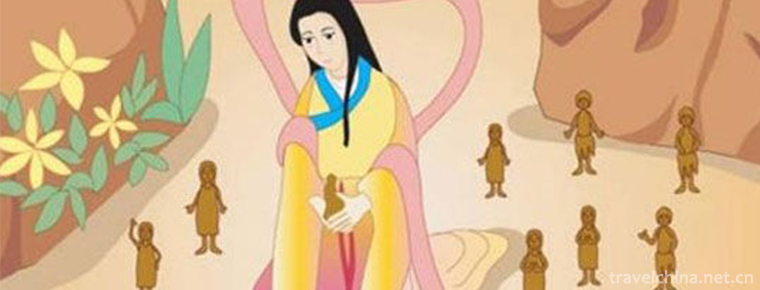
-
Dalian Laohutan Ocean Park
Dalian Laohutan Ocean Park is located in the middle of the southern coast of Dalian, a national scenic spot. It covers an area of 1.18 million square meters .
Views: 254 Time 2018-12-02 -
Root palace Buddhist Cultural Tourism Zone
Root palace Buddhist Cultural Tourism Zone / Gengong Buddha Country Cultural Tourist Area, National AAAAA Tourist Scenic Area, National Eco-civilization Education Base.
Views: 126 Time 2018-12-07 -
Scenic Spot of the Source of the Yellow River
Kariqu, one of the sources of the Yellow River, started with five springs, and Maqu, the other with only one springs. This is the source area of the Yellow River. Tourists here can't imagine that the .
Views: 175 Time 2019-01-18 -
Taishan Hot Spring City
Taishan Hot Spring City Cultural Tourism Scenic Spot is invested and constructed by Shandong Taishan Hot Spring Tourism Development Co., Ltd. with a total investment of 2.6 billion yuan.
Views: 136 Time 2019-02-13 -
Weishan Lake National Wetland Park
Weishan Lake National Wetland Park, located in the southern part of Weishan County, Jining City, Shandong Province, is less than 3 kilometers away from the urban area..
Views: 196 Time 2019-02-22 -
Tibetan Cobalt Technology
Zhang Zhaxi, a Tibetan cobalt-smelting craftsman over half a century old, told reporters that he was just "catching its tail" when the craft was losing its popularity..
Views: 164 Time 2019-04-15 -
Hexi treasure roll
Hexi Baojuan, a traditional folk literature in Liangzhou District of Wuwei City and Suzhou District of Jiuquan City, Gansu Province, is one of the national intangible cultural heritages..
Views: 120 Time 2019-05-03 -
Music of Lantian Puhua Water Club
Lantian Puhua Water Concert Music is a kind of folk blowing music which has been circulated in Puhua Town of Lantian County, Shaanxi Province for more than 1000 years.
Views: 429 Time 2019-05-11 -
Folk fire Min Jian She Huo
Folk society fire is a kind of folk entertainment popular in China during the Spring Festival. It is widely spread in Shaanxi, Shanxi, Hebei, Henan, Liaoning and other provinces. On May 20, 2006, Folk.
Views: 155 Time 2019-06-05 -
Longhua Town
The synonym Longhua ancient town generally refers to Longhua town.
Views: 148 Time 2020-10-16 -
Suining hydrology
There are many small and medium-sized rivers in Suining City. There are 15 rivers with drainage area of more than 100 square kilometers in Suining City, including Fujiang River, Qiongjiang River, Qijiang River, Zijiang River, Qinggang River and Pengxi River. .
Views: 334 Time 2020-12-16 -
Nanchongs tertiary industry
In 2019, investment in real estate development in Nanchong will increase by 23.6% compared with that in 2018. The construction area of commercial housing was 31.8726 million square meters, an increase of 23.5% over that in 2018, of which the newly started.
Views: 336 Time 2020-12-17

